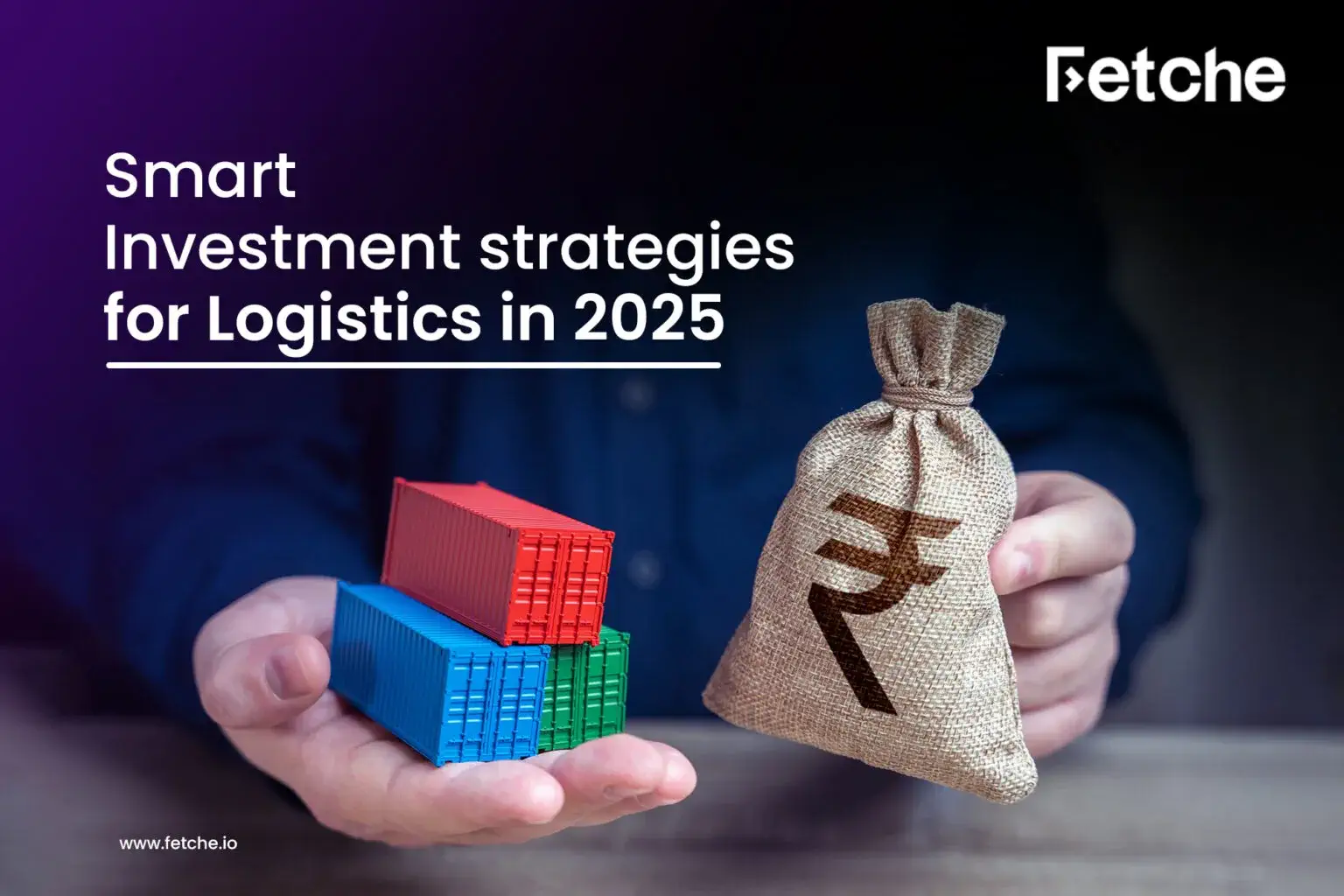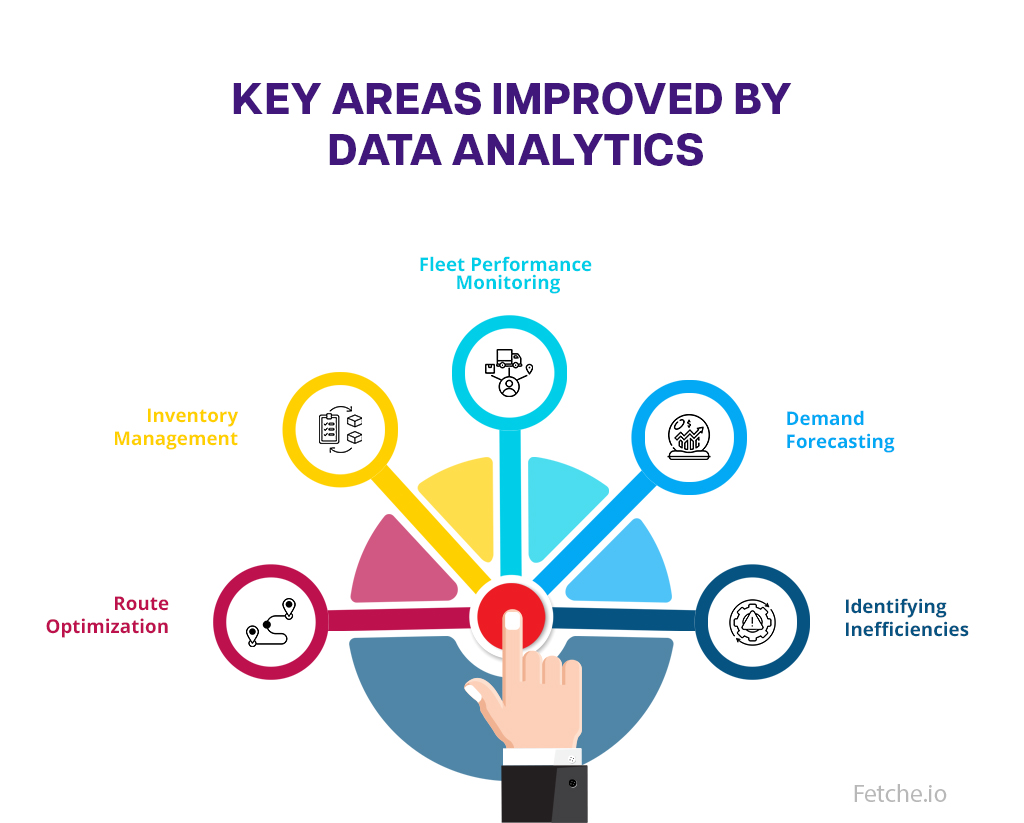
The year 2025 witnessed the implementation of many new technologies in the logistics industry. While new technologies have been creeping into the industry for many years, most of them were far from practical and profitable. But this year, these cutting-edge technologies have become essential investments for the continued success of most companies.
Apart from technologies, there are also other things that you need to invest in while setting up or scaling your business. Moreover, you have to come up with investment strategies that will account for the changes that are bound to follow this year. It is easier said than done, we understand that. This is why we put together this blog. It lists smart logistics investment strategies for 2025.
A Major Challenge When Investing in Logistics
A trend that has been observed in general is that the logistics companies that adopted technological advances without much delay reaped many benefits. Their investments saw significant returns, and there has been a boom in business.
On the other hand, some companies struggled with choosing the right technologies to invest in. These logistics companies invested too much, too quickly. This ended up overwhelming their operations. Multitudes of logistics software and automated systems without proper integration ended up complicating matters and led to losses. This is a major challenge when investing in logistics.
Technologies Worth Investing In
As we said before, investing in a plethora of technologies without proper planning can result in a negative impact. That said, not investing in technology can be a mistake, too. So what can you do? The answer is to invest in the right technology. We have put together a list of technologies that are worth investing in.
1. Artificial Intelligence (AI)
Today, everything from predictive analytics to real-time tracking can be easily done with the help of AI in supply chain management.
AI-driven predictive analytics can forecast demand. This allows companies to adjust inventory levels accordingly. This will prevent stockouts and overstock situations, leading to cost savings.
Customer service can also be enhanced through AI-powered chatbots and virtual assistants. This will, in turn, decrease labor costs and increase brand loyalty. You can also apply AI in route optimization. This will give you significant savings through decreased fuel consumption and enhanced order grouping.
As you start to apply AI to your operations, initially focus on automating repetitive tasks. Then, move on to optimizing major operations like fleet management, warehouse management, and inventory management.
2. Blockchain Technology
Blockchain makes supply chain activities more transparent and accessible. They do this by creating immutable records of transactions. This ensures data integrity and fosters trust among shareholders. You can easily track goods, verify authenticity, and streamline payments.
Companies that implemented blockchain technology were able to combat counterfeit goods. They were also able to ensure compliance with regulatory standards. This is a crucial step in preparing for the future of supply chain innovation.
3. Internet of Things (IoT)
IoT has transformed logistics operations. It has enabled real-time tracking, automation, and improved asset management. Implement IoT devices to track your shipments, monitor temperature-sensitive goods, and optimize warehouse operations. They will also optimize fleet management by providing data on vehicle health, fuel efficiency, driver behavior, etc. This will reduce maintenance costs and enhance efficiency.
You can also implement this technology in your warehouses. Warehouse automation solutions powered by IoT can facilitate inventory management. It will provide real-time visibility, prevent losses, and ensure timely restocking.
Invest in Data Analytics for Cost Efficiency
The buzzword now is ‘data’. And it is not just information. You cannot trivialize data as just ‘information’. It is the lifeblood of most logistics companies. While it was once impossible to process and sift through massive datasets, today, with AI, it is very much possible. AI-driven tools can process complex data and draw from it hitherto unseen patterns and insights. And all this within seconds. This level of data analytics is to be leveraged if you wish to stay ahead of the competition.
So, invest in data analytics to make smarter decisions. Implement AI-driven tools to track performance metrics, analyze past trends, and forecast demand. This way, you can maximize profit and enhance the efficiency of all logistics operations. In a market where every second and every dollar counts, using data wisely isn’t just an advantage, it’s a necessity. Moreover, it is a cornerstone of logistics cost optimization.
Data analytics can have a positive impact in the following areas:
- Route Optimization
- Inventory Management
- Fleet Performance Monitoring
- Demand Forecasting
- Identifying Inefficiencies

Sustainable Logistics Investment Strategies
Over the years, sustainability regulations have become stricter. This trend is bound to continue. So, incorporating sustainability into your business is essential. However, your sole concern should not be just to comply with all the regulations. Sustainability is much more than a corporate responsibility today. Many customers are also demanding sustainability. So, sustainable logistics investments are not just about legal compliance or ethics. It is about customer satisfaction, too. This will also indirectly function as an economic advantage for you.
Here are a few sustainable practices that you could implement:
- Transition your fleet to Electric Vehicles (EVs)
- Upgrade your warehouses to solar-powered facilities.
- Equip the warehouses with LED lighting.
- Implement smart warehouse technologies and automated systems.
- Invest in carbon offset projects.
Invest in Future-Proofing all Logistics Operations
Lastly, you need to invest in future-proofing your business to remain competitive and adapt to the future of the logistics industry. Let’s see what you can do to future-proof your logistics operations.
1. Collaborative Platforms
Invest in collaborative platforms. Having a collaborative platform can result in positive outcomes like shared data and insights. This will lead to more synchronized operations. This will effectively mitigate any risk of delays. Additionally, it will enhance overall efficiency.
We would like to give you a piece of advice here. Always do research before you invest in a collaborative platform. Make sure it has all the features your company needs. Also, make sure that it can integrate easily with any existing systems or software.
2. Asset-Light Models
Have you heard of asset-light models? This model decreases reliance on physical assets. Think about it, physical assets take up money and space. By decreasing dependence on them, you can effectively minimize operational costs. Some companies implement this model by opting for third-party logistics (3PL) providers. This way, you can outsource some operations to reduce costs. You could choose what operation to outsource. For instance, you could outsource warehousing.
3. Cloud-Based Solutions
Cloud-based solutions have been popular for a while. And the popularity of this trend will continue undeterred. This is mainly because cloud-based solutions have many benefits. Some of these benefits are:
- Speed
- Cost-effectiveness
- Control
- Scalability
- Security
Aren’t those benefits tempting? If you haven’t already incorporated cloud computing into your operations, do it now.
4. Digital Twin Technology
Sometimes disruptions in the supply chain are unavoidable. But what if you can predict it? It would allow you to put in place mitigative measures. This is possible through digital twin technology. These digital twins are virtual replicas of your physical supply chains. These simulations allow you to monitor your supply chain in real-time. It enables scenario planning, too. This will let you anticipate potential disruptions and develop contingency plans.
Conclusion
As digital transformation in logistics is progressing rapidly, the sector will continue evolving beyond 2025. This makes the road to building a future-ready logistics business tricky. However, the industry is highly rewarding. Those who invest in efficiency and technology today will surely reap the benefits. So invest in the latest technology in logistics, data analytics, and sustainability. Also, be sure to future-proof your business.
